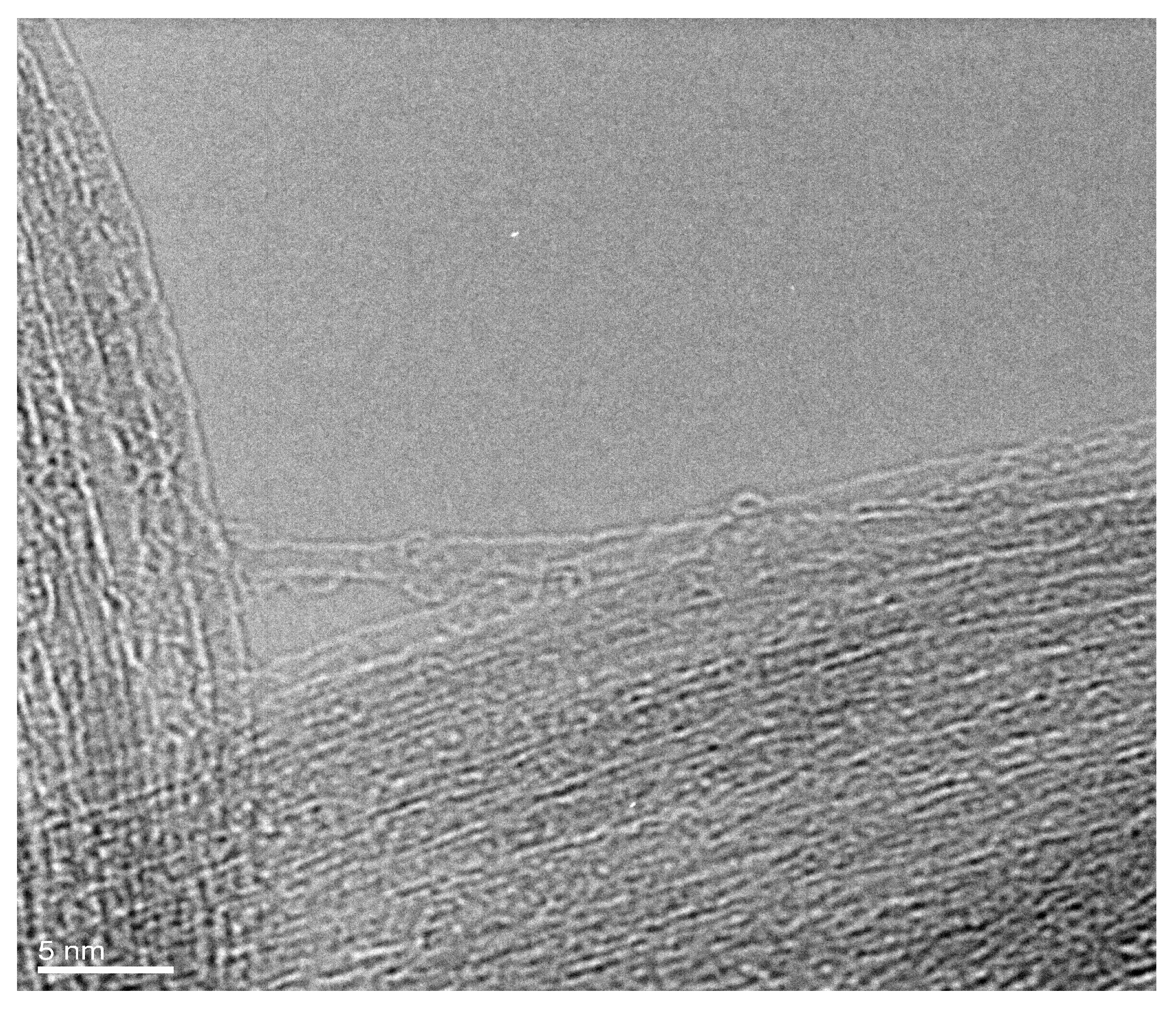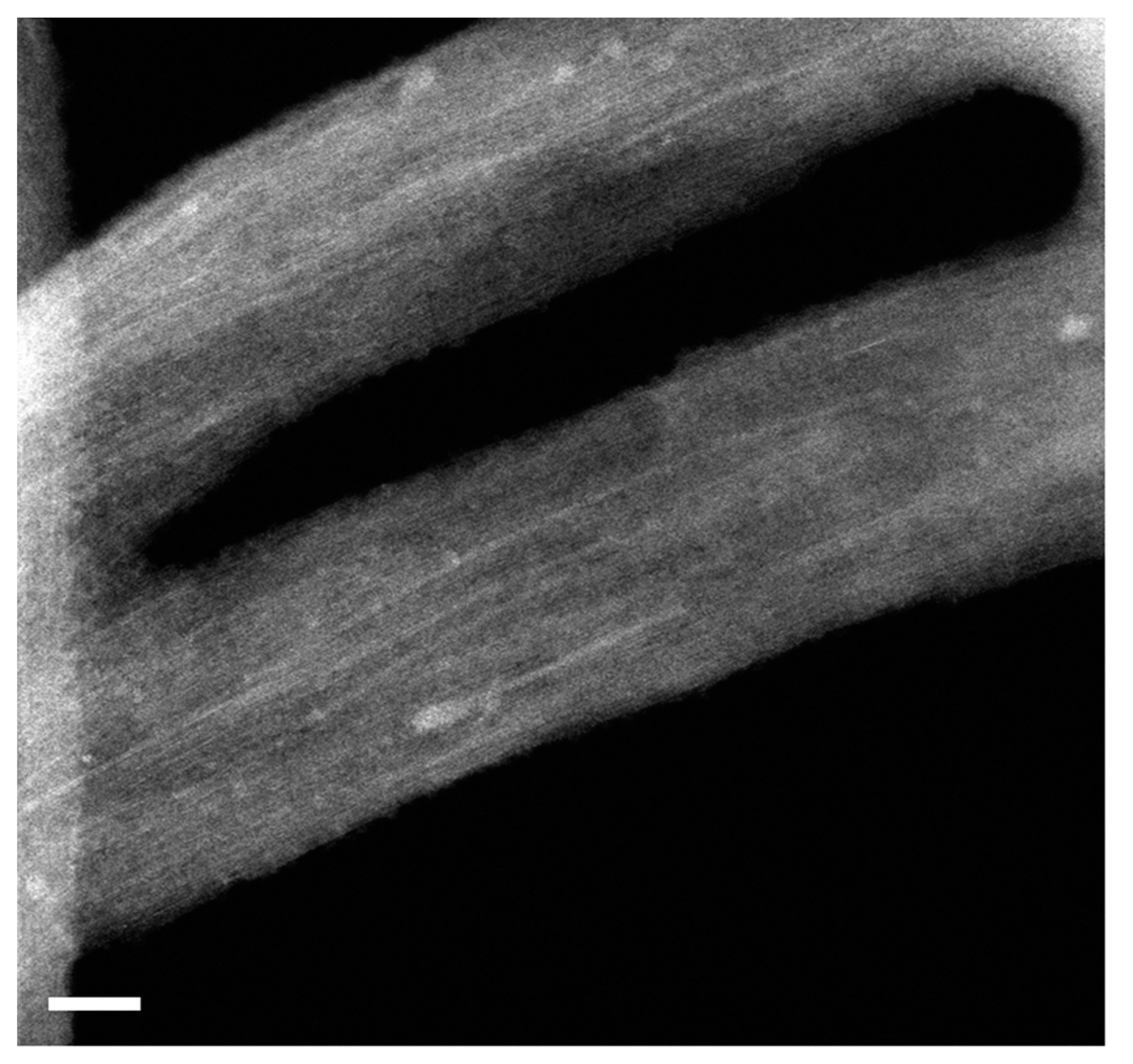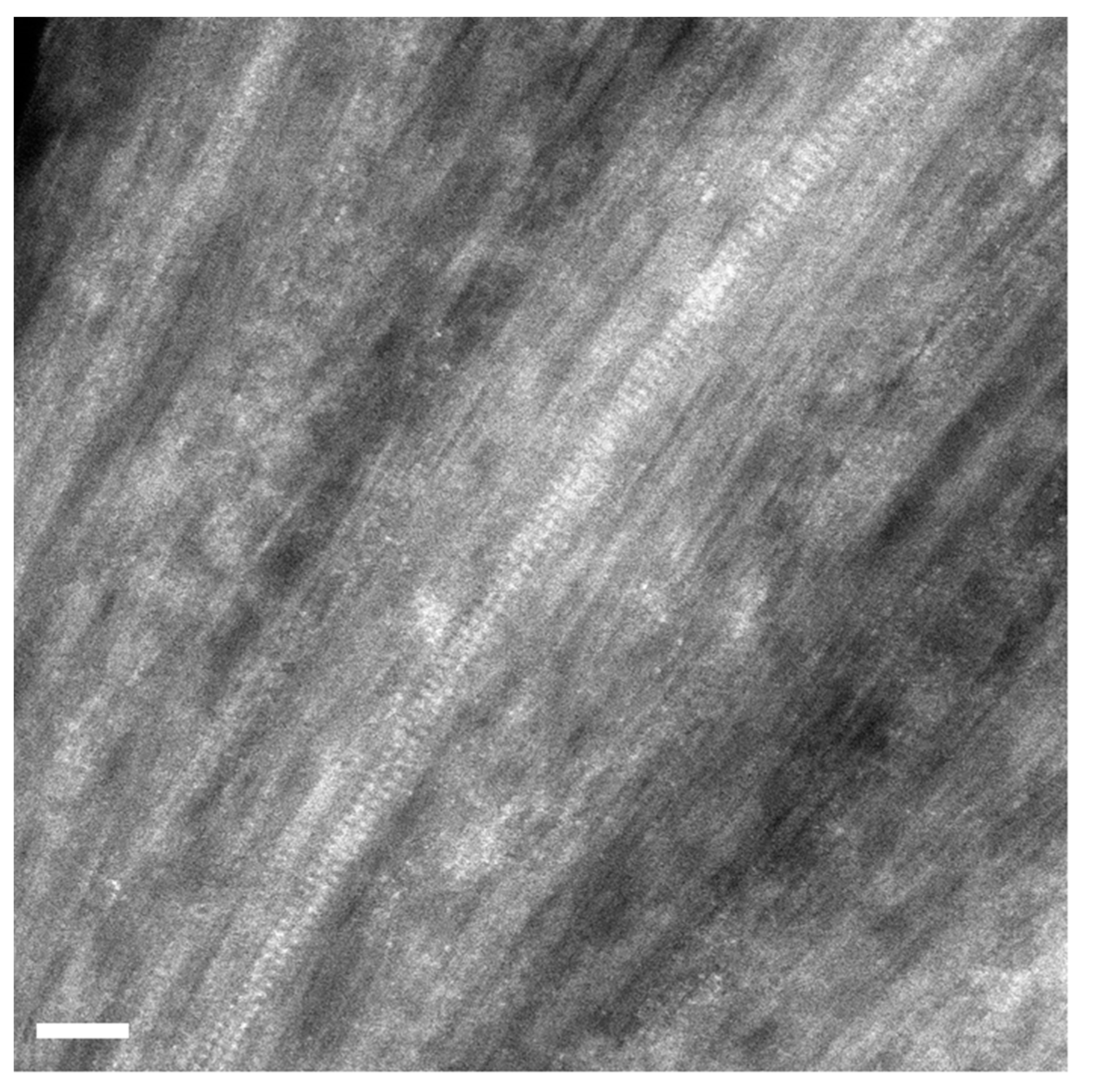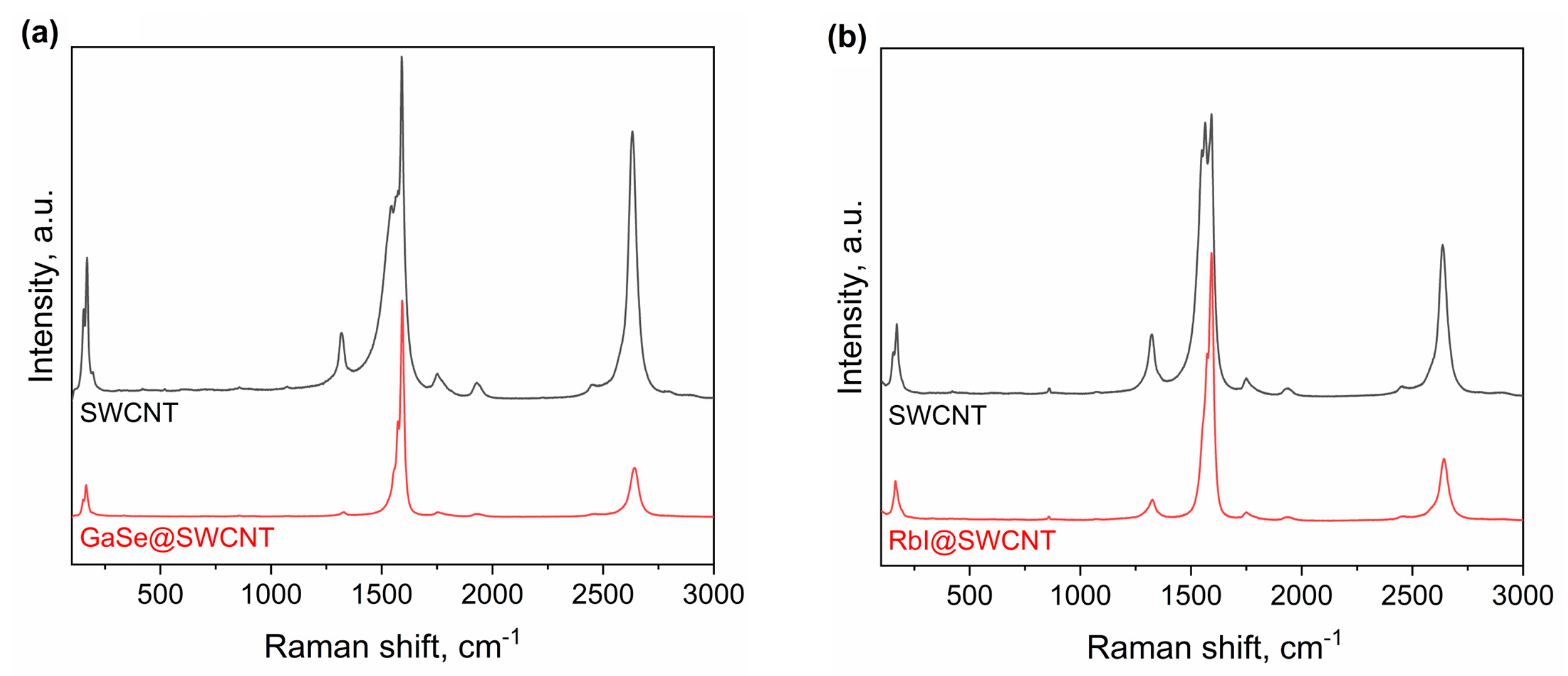Gallium Selenide and Rubidium Iodide Filling of Single-Walled Carbon Nanotubes as p, and n-Dopant Chemical Compounds †
Abstract
:1. Introduction
2. Experimental
3. Results
4. Conclusions
Funding
Institutional Review Board Statement
Informed Consent Statement
Data Availability Statement
Conflicts of Interest
References
- Kashtiban, R.J.; Burdanova, M.G.; Vasylenko, A.; Wynn, J.; Medeiros, P.V.C.; Ramasse, Q.; Morris, A.J.; Quigley, D.; Lloyd-Hughes, J.; Sloan, J. Linear and Helical Cesium Iodide Atomic Chains in Ultranarrow Single-Walled Carbon Nanotubes: Impact on Optical Properties. ACS Nano 2021, 15, 13389–13398. [Google Scholar] [CrossRef] [PubMed]
- Vorfolomeeva, A.A.; Stolyarova, S.G.; Asanov, I.P.; Shlyakhova, E.V.; Plyusnin, P.E.; Maksimovskiy, E.A.; Gerasimov, E.Y.; Chuvilin, A.L.; Okotrub, A.V.; Bulusheva, L.G. Single-Walled Carbon Nanotubes with Red Phosphorus in Lithium-Ion Batteries: Effect of Surface and Encapsulated Phosphorus. Nanomaterials 2023, 13, 153. [Google Scholar] [CrossRef] [PubMed]
- Vorfolomeeva, A.A.; Pushkarevsky, N.A.; Koroteev, V.O.; Surovtsev, N.V.; Chuvilin, A.L.; Shlyakhova, E.V.; Plyusnin, P.E.; Makarova, A.A.; Okotrub, A.V.; Bulusheva, L.G. Doping of Carbon Nanotubes with Encapsulated Phosphorus Chains. Inorg. Chem. 2022, 61, 9605–9614. [Google Scholar] [CrossRef] [PubMed]
- Fedoseeva, Y.V.; Bulusheva, L.G.; Okotrub, A.V.; Vyalikh, D.V.; Fonseca, A. XANES Investigation of Pristine and Fluorinated Single-Walled Carbon Nanotubes Before and After Annealing. Fuller. Nanotub. Carbon Nanostructures 2010, 18, 595–599. [Google Scholar] [CrossRef]
- Fedoseeva, Y.V.; Orekhov, A.S.; Chekhova, G.N.; Koroteev, V.O.; Kanygin, M.A.; Senkovskiy, B.V.; Chuvilin, A.; Pontiroli, D.; Riccò, M.; Bulusheva, L.G.; et al. Single-Walled Carbon Nanotube Reactor for Redox Transformation of Mercury Dichloride. ACS Nano 2017, 11, 8643–8649. [Google Scholar]
- Sedelnikova, O.V.; Gurova, O.A.; Makarova, A.A.; Fedorenko, A.D.; Nikolenko, A.D.; Plyusnin, P.E.; Arenal, R.; Bulusheva, L.G.; Okotrub, A.V. Light-Induced Sulfur Transport inside Single-Walled Carbon Nanotubes. Nanomaterials 2020, 10, 818. [Google Scholar] [CrossRef] [PubMed]
- Weller, M.; Overton, T.; Rourke, J.; Armstrong, F. Inorganic Chemistry, 6th ed.; Oxford University Press: Oxford, UK, 2014. [Google Scholar]





Disclaimer/Publisher’s Note: The statements, opinions and data contained in all publications are solely those of the individual author(s) and contributor(s) and not of MDPI and/or the editor(s). MDPI and/or the editor(s) disclaim responsibility for any injury to people or property resulting from any ideas, methods, instructions or products referred to in the content. |
© 2023 by the author. Licensee MDPI, Basel, Switzerland. This article is an open access article distributed under the terms and conditions of the Creative Commons Attribution (CC BY) license (https://creativecommons.org/licenses/by/4.0/).
Share and Cite
Kharlamova, M.V. Gallium Selenide and Rubidium Iodide Filling of Single-Walled Carbon Nanotubes as p, and n-Dopant Chemical Compounds. Eng. Proc. 2023, 37, 49. https://doi.org/10.3390/ECP2023-14624
Kharlamova MV. Gallium Selenide and Rubidium Iodide Filling of Single-Walled Carbon Nanotubes as p, and n-Dopant Chemical Compounds. Engineering Proceedings. 2023; 37(1):49. https://doi.org/10.3390/ECP2023-14624
Chicago/Turabian StyleKharlamova, Marianna V. 2023. "Gallium Selenide and Rubidium Iodide Filling of Single-Walled Carbon Nanotubes as p, and n-Dopant Chemical Compounds" Engineering Proceedings 37, no. 1: 49. https://doi.org/10.3390/ECP2023-14624
APA StyleKharlamova, M. V. (2023). Gallium Selenide and Rubidium Iodide Filling of Single-Walled Carbon Nanotubes as p, and n-Dopant Chemical Compounds. Engineering Proceedings, 37(1), 49. https://doi.org/10.3390/ECP2023-14624




